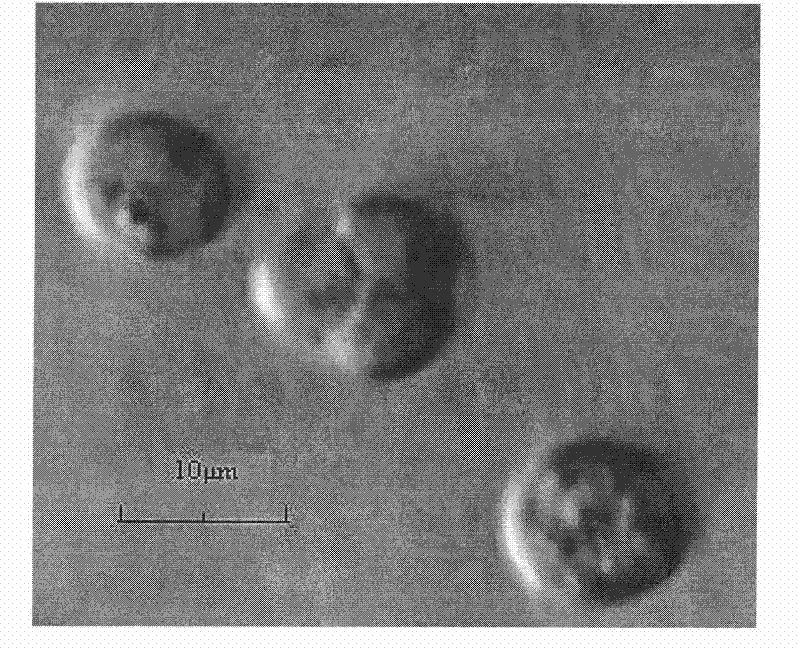Saccharomyces cerevisiae and application thereof in wine brewing
A technology of Saccharomyces cerevisiae and wine, applied in Saccharomyces cerevisiae and its application field in brewing dry red wine, to achieve the effect of moderate yield, high utilization rate and increased content
- Summary
- Abstract
- Description
- Claims
- Application Information
AI Technical Summary
Problems solved by technology
Method used
Image
Examples
Embodiment 1
[0022] Example 1. Separation, purification and identification of Saccharomyces cerevisiae NJZCC17CGMCC No. 3284
[0023]More than 200 wild yeast strains isolated from the surface of different grape varieties in Changli grape production area were isolated, identified and screened. The isolation method adopts the plate dilution coating method to pick a single colony and purify it twice consecutively. The identification method adopts traditional morphological identification and physiological and biochemical identification combined with ATB ID 32C yeast automatic identification system (BioMérieux, France), supplemented by 5.8S-ITS rDNA PCR-RFLP and 5.8S-ITS rDNA sequence analysis of two molecules The strains were identified by biological methods; the strains identified as Saccharomyces cerevisiae were all commercialized active dry yeast (Active Dry Yeast, ADY) Zymaflora F15 (hereinafter abbreviated as F15) produced by French LAFFORT company as a control strain for preliminary scre...
Embodiment 2
[0049] Embodiment 2, experiment of brewing effect of Saccharomyces cerevisiae strain (Saccharomyces cerevisiae) NZJCC17
[0050] Comparison of brewing characteristics of excellent wine Saccharomyces cerevisiae strain NJZCC17 and control strain CICC1450 in simulated fermented grape juice, the specific methods are as follows:
[0051] Saccharomyces cerevisiae NJZCC17 and Saccharomyces cerevisiae CICC1450 stored at -80°C were passaged twice on YEPD solid and liquid medium respectively, according to 10 6 CFU / mL was inoculated in 1.8L simulated grape juice culture medium and cultured at 25°C.
[0052] Pick and culture Saccharomyces cerevisiae NJZCC17 or Saccharomyces cerevisiae CICC1450 control strains that were cultured overnight and insert them into test tubes containing 10 mL liquid YEPD medium. Incubate at 28°C for 12 hours. then follow 10 6 The inoculation amount of CFU / mL was inoculated in simulated grape juice, cultivated at 25°C until the residual sugar content was less ...
Embodiment 3
[0078] Embodiment 3, small-scale winemaking comparison experiment of Saccharomyces cerevisiae NZJCC17 and commercial strain F15 in Cabernet Sauvignon grape juice
[0079] The Saccharomyces cerevisiae strain NJZCC17 of the present invention and the control strain active dry yeast ADY F15 were brewed with 4L of Cabernet Sauvignon grape juice, and the brewing characteristics were compared. The following brewing experiments are carried out with the grape juice obtained by removing stems and impurities from Changli Cabernet Sauvignon grapes in 2007, then crushing and squeezing the juice as raw materials. The following main physical and chemical indicators of Cabernet Sauvignon grapes produced in Changli in 2007 are: reducing sugar (glucose) content, 210.99±1.20g / L; total acidity (tartaric acid), 5.06±0.46g / L; pH=3.83 ±0.04.
[0080] Saccharomyces cerevisiae NZJCC17 stored at -80°C was passed twice on YEPD solid and liquid medium, and the commercial strain active dry yeast F15 at 7°C...
PUM
 Login to View More
Login to View More Abstract
Description
Claims
Application Information
 Login to View More
Login to View More - R&D
- Intellectual Property
- Life Sciences
- Materials
- Tech Scout
- Unparalleled Data Quality
- Higher Quality Content
- 60% Fewer Hallucinations
Browse by: Latest US Patents, China's latest patents, Technical Efficacy Thesaurus, Application Domain, Technology Topic, Popular Technical Reports.
© 2025 PatSnap. All rights reserved.Legal|Privacy policy|Modern Slavery Act Transparency Statement|Sitemap|About US| Contact US: help@patsnap.com



